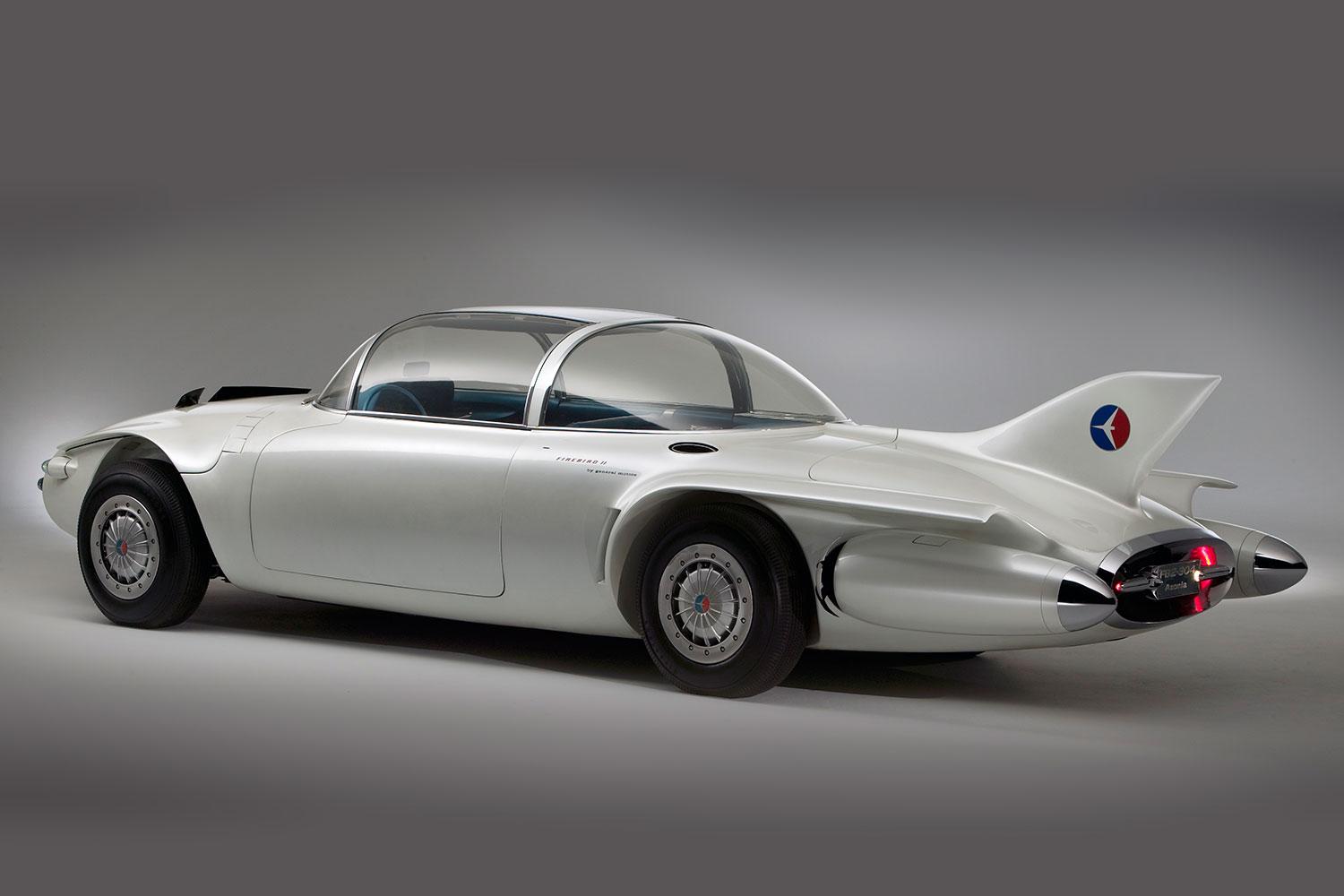
A few times each year, car companies predict the future.
At auto shows worldwide, concept cars wow audiences with radical styling and tech that would make Gene Roddenberry smile, but what happens when tomorrow’s high tech ride becomes yesterday’s fantasy?
This summer, visitors to Heritage Museums & Gardens in Sandwich, Massachusetts will get to see those futures past, and see what car designers can do when they let their imaginations run wild. It’s all part of a special exhibit of concept cars called “Driving Our Dreams: Imagination in Motion.”
Headlining the exhibit are three cars from General Motors’ 1950s Motorama: the jet turbine-powered Firebird II and Buick Centurion and Wildcat II. Rarely seen in public, these one-off dream cars set the standard for all concept cars to follow.

Held from 1949 to 1961, the Motorama was a traveling show with the deliberate theatricality of an Apple World Wide Developer Conference. GM used it to promote new products and paint a picture of a future based around the automobile. For the public, outrageous concept cars were the draw.
It doesn’t get much more outrageous than the Firebird II, a family sedan powered by jet engines and shaped like a spaceship. That bubble canopy probably makes life a little unpleasant on hot days.
Despite the sci-fi design, the Firebird II was also somewhat prescient: according to the Motorama script, a production Firebird would be able to drive itself using (non-existent) tech that allowed it to “see” the road. That’s very similar to the sensor-impregnated “smart roads” some experts believe will make self-driving cars a reality in this century.
Other cars focused more on styling than tech. The Buick Centurion and Wildcat II may look pretty radical (especially for cars from GM’s senior citizen division), but that was the point.
Once you catch a glimpse of the Wildcat’s floating headlights and sleek tail fins, or the Centurion’s pointed front end and bubble canopy, it’s hard to look away. Underneath the glitz, it’s even possible to see hints of the tamer production cars these concepts previewed.
In the era of jets, rockets, and impending nuclear war, even humdrum production cars were dressed up with Space Age jewelry to give their makers a more exciting image.

Hudson turned to Italian coachbuilder Touring to create a coupe worthy of the Jetsons. Based on the company’s Jet, it was appropriately named Italia. Plymouth did the same trick with the 1954 Explorer, one of a series of “Idea Cars” from Chrysler, sporting a custom body from Ghia.
Other concepts sought to predict the future of a specific model, sometimes changing everything but the name.
If you’re having trouble adjusting to the 2014 Chevrolet Corvette Stingray’s new look and tech-filled cabin, consider the mid-engined 1986 Corvette Indy and 1990 CERV III (Chevrolet Engineering Research Vehicle) concepts, or the all-aluminum Reynolds Corvette.
Putting the engine in the middle increases weight distribution, and aluminum bodywork reduces weight, but Chevy has stuck with the traditional front-engined layout and composite body on all production Corvettes.
- 1. Solar Car
- 2. 1990 CERV III
- 3. Terrafugia
It’s surreal to see these different takes on the GM car with the most tradition behind its name, and to think of what today’s ‘Vette would look like if the General had decided to put one of them into production.
The 1963 Corvair Monza SS takes things from the surreal to the ridiculous. Everyone knows the Corvair as the Volkswagen-fighting compact Chevy conjured up in 1960, only to inspire the ire of Ralph Nader.
That car didn’t look anything like the wedge-shaped Monza. What would Ralph think of this sleek sports car, which shares nothing with the utilitarian Corvair except a rear-mounted engine and a badge?
Looking pretty and promising tech that doesn’t exist is one thing, but what about cars that can actually do what their creators say they can?
Finishing off the exhibit were two modern cars, the solar-powered 2009 Infinium and the Terrafugia Transition flying car.

The Infinium may look like the love child of a solar panel and a skateboard, and it may be lacking in headroom, but its is a working car powered by sunshine. Built by the Unversity of Michigan Solar Car Team for the 2010 American Solar Challenge, it uses 2,000 gallium arsenide solar cells to develop a breathtaking 12.3 horsepower.
Unlike the vintage Motorama cars, the Transition’s wings work. It’s actually more like an airplane for the road than a “flying car,” designed to land at small airports in sparsely populated areas and allow its pilot to fold up the wings and drive to his or her final destination.
The Transition made its first flight last year, and Terrafugia is currently taking orders at about $280,000 a pop.
Whether it’s futuristic styling, alternative propulsion, or moving beyond the need for roads, car designers can come up with some pretty cool stuff when they dream big. Seeing the vehicles create allows us to live in that dream world too.
“Driving Our Dreams: Imagination in Motion” runs through October 27 at Heritage Museums & Gardens in Sandwich, Massachusetts. If you’re planning a trip to the beaches on Cape Cod, check it out.





